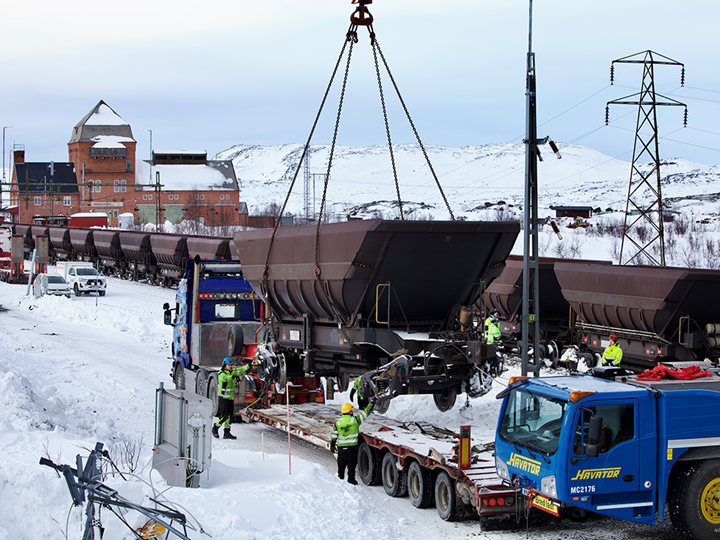LKAB, the largest iron ore producer in Europe, said that some of its facilities might close unless capacity along the Iron Ore Line, or Malmbanan, doesn’t improve significantly. “LKAB is reviewing closure in either Kiruna or Svappavaara based on what would mean the least damage to the company”, they said.
Because of capacity issues, LKAB now finds itself with so much iron ore lying in Kiruna and Svappavaara to fill up 600 trains. “We cannot deliver the volumes we can produce”, a spokesperson from LKAB told RailFreight.com. If either of the facilities close, the job loss might be significant. “That’s some 300 jobs at LKAB, and perhaps as many from our contractors and consultants”, the spokesperson added. However, it is too early to expect a decision as many parameters need to be considered.
Moving passengers to buses to leave room for freight?
The situation is already worrying, as LKAB said it had to reduce production in Malmberget because there was not enough capacity to transport raw materials from Svappavaara. Production in Malmberget has already decreased by one million tonnes per year, which translates into an annual revenue loss of 86.8 million euros at the current prices (one billion SEK).
“If we cannot, together with the Swedish Transport Administration (Trafikverket) and Norwegian BaneNor, seriously increase the capacity within the existing system, we will be forced to take even more drastic measures”, LKAB underlined. One of the possible solutions mentioned by the LKAB spokesperson is to transfer passenger services from trains to buses in specific sections of the line and times of the day. This would ensure more capacity for freight trains.
LKAB is produced 26.2 million metric tonnes of iron ore in 2024 out of 38 total in Sweden. The country produces around 90 per cent of the European iron ore, making it a key player for the steel industry among others. The vast majority of LKAB’s iron ore travels on freight trains along the Iron Ore Line, which connects the Swedish port of Luleå to the Norwegian port of Narvik.
Recent derailments didn’t help
The disastrous situation for LKAB was amplified by two derailments near Vassijaure that cut off rail access to the Norwegian port of Narvik. The first one occurred on 17 December and led to the railway being unusable until 20 February. On 24 February, however, another freight train derailed and the line was closed again until 6 March. The spokesperson clarified that the cut of production was not caused by these derailments, but the general lack of capacity along the line. Sill, the derailments caused daily losses for 8.6 million euros for LKAB.

“For the past 20 years, LKAB has pointed out the risks of the railway’s lack of capacity, the need for extended maintenance of the existing system and the need for double track”, the company claimed. The company also underlined how, for its part, it made significant investments including more wagons, a locomotive workshop and a wheelset maintenance facility. Recently, Trafikverket was commissioned by the Swedish government to prioritise projects along the Iron Ore Line. Most of them should focus on facilitating the traffic of trains with an axle load of 32,5 tonnes compared to the current 30.
Also read: